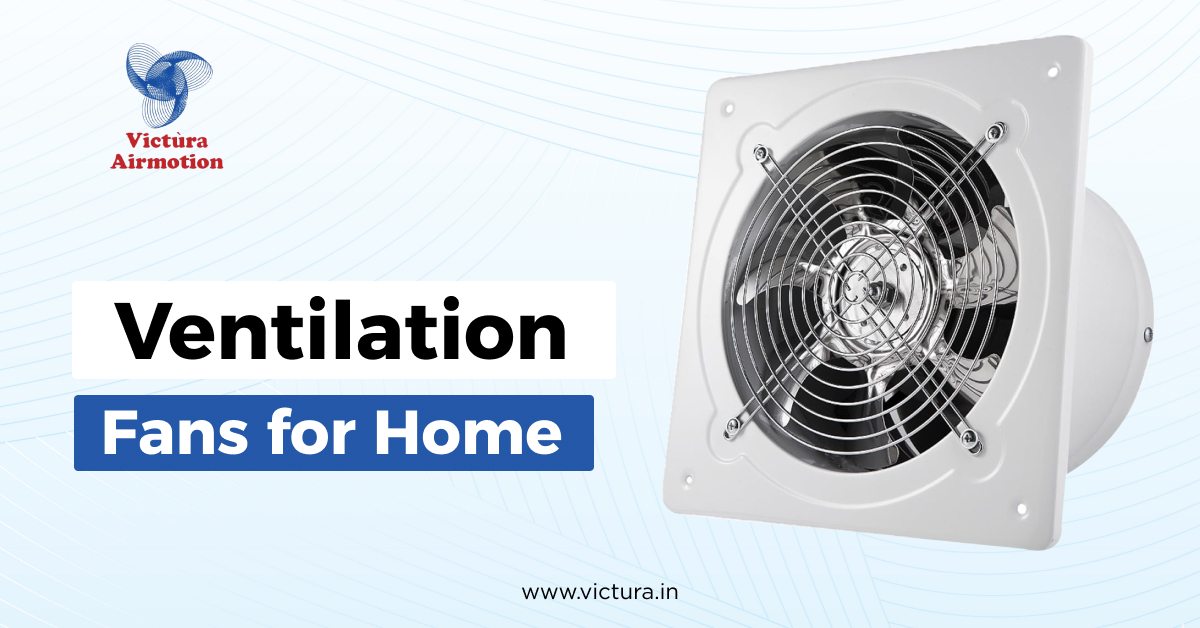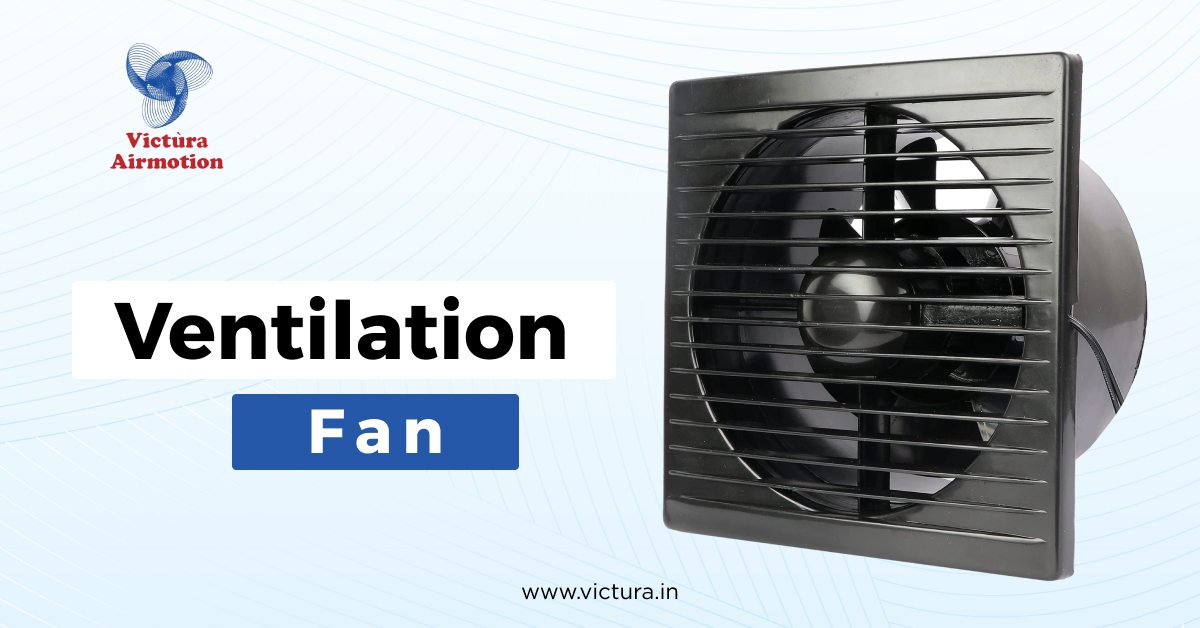A Ventilation Fan can be a real game-changer for your household. Last summer, Ravi got his dream house: a snug three-room home with a tiny yard. But new homes are only made to keep energy in, but this also keeps old air, wet air, and bad stuff in the air trapped inside. This is why fans that bring in fresh air are not just extra, they are key for a home that feels good and healthy.
In this blog, we’ll look at why you really need to look at Victùra Airmotion fans, the top 5 spots in your home where they will help the most, and how to put them in.
Is a Ventilation Fan Necessary?
Think about living in a house where each time you breathe it’s fresh and light, without smoke, wetness, or old smells. That’s what a good air fan does.
Air fans work to pull out old, wet, or dirty air from your house and pull in fresh air. Here are the benefits:
- Cut down the dampness: Stop mold and wet spots.
- Take away smells: Like last night’s fish dish or the stale air after rain.
- Make the air inside cleaner: By taking out things that make you sneeze, dust, and bad gases.
- Protect your walls, ceilings, and furniture: Less wet means less cracked paint or bent wood.
Top 5 Places for Ventilation Fans in Your Home
1. Roof Ventilation Fan
Think of it as the silent protector on top of your house.
Have you ever stepped into your attic or top floor on a sunny day? It’s like walking into a furnace. Hot air rises and gets trapped under your roof, pushing your AC to work double time.
That’s where a roof ventilation fan works wonders. A roof vent fan does great things. It pulls warm air from your house, making it cooler all over. It stops wet build up too, which can break your roof after a while.
Story time:
Ravi installed a solar roof ventilation fan last year. The next hot season, he saw his top floors were way cooler, by 4-5 degrees. His power costs went down too. Sometimes, the fixes we don’t see are the ones that help the most.
2. Kitchen Ventilation Fan
Most Indian homes have their heart in the kitchen, where it smells of spices and smoke. While you cook, like heating mustard seeds in oil or making pakoras, tiny bits mix in the air. They land on walls, cupboards, and in your lungs if you don’t have a good kitchen vent fan.
This vent takes out the smoke, steam, and bad smells, keeping your cooking area clean and free from sticky mess.
Tip:
Set it up close to where you cook. If you often fry or use a lot of spices, this is a must.
3. Bathroom Ventilation Fan
The most underrated necessity.
After a long shower, your bathroom feels like a hot room. Steam sticks on mirrors and walls, letting mold grow. A bathroom vent fan takes away the moist air, dries up your bathroom fast, and keeps it smelling good.
Story time:
Ravi’s guest bathroom didn’t have a fan, and within six months, dark spots started appearing on the ceiling corners. A simple exhaust fan installation saved him from a costly repaint.
4. Laundry Room Ventilation Fan
Tiny room, massive impact.
Your washing machine and dryer pump out loads of humidity. If it hangs around, it can seep into nearby rooms or even harm your machines’ electronics.
A laundry room exhaust fan whisks away that excess moisture, along with strong detergent or softener smells that can easily get trapped in a small room.
5. Garage Ventilation Fan
Because your car and tools deserve fresh air too.
Garages often store paints, fuels, or other chemicals. Without ventilation, harmful fumes can linger. A garage ventilator fan not only clears out these fumes but also helps remove heat and moisture, protecting your car’s electronics and preventing rust on your tools.
Bonus:
If your garage is attached to your home, proper ventilation stops these fumes from creeping into your living spaces.

How to Install a Ventilation Fan: The Detailed Process
Now that we know where ventilation exhaust fan works best, let’s look at how to actually install one. Big setups (like roof fans or large kitchen vents) may need a pro, but small wall or window fans are easy to set up by yourself.
Step 1: Pick The Right Size
- Fans for airing out have a CFM mark (Cubic Feet per Minute). This shows how much air the fan can move.
- For small bathrooms, go for at least 50 CFM; for larger ones, 80+ CFM is best.
- Kitchens and laundry areas often need bigger fans.
Step 2: Pick the Location
- Place your fan opposite to the main source of fresh air (like a door or window).
- In bathrooms, it should be near the shower area.
- In kitchens, directly above or beside the stove.
Step 3: Cut the Opening
- Trace the fan’s template on your wall or ceiling.
- Use a jigsaw or wall cutter to carefully cut along the lines.
- Nervous? If power tools aren’t your thing, it’s smart to hire a carpenter for this step.
Step 4: Install the Fan
- Insert the fan into the hole, secure it with screws.
- Attach the exhaust duct firmly, it carries stale air outside.
- Seal gaps with silicone so there’s no air leakage.
Step 5: Wire It Up
- Turn off your main power supply.
- Connect the fan wires to your home circuit (usually color-coded).
- If unsure, get a certified electrician.
- Not confident? Get a certified electrician to handle this.
Step 6: Finish Up
- Install the grill or cover.
- Clean up the area and run the fan for 10-15 minutes to ensure it’s pulling air effectively.
Conclusion
So, when your home gets hot or your bathroom glass fogs up, it means your home needs a Ventilation Fan. It’s not just for ease. It’s to keep your home safe from what you can’t see, like wet, mold, & stale air. From the top to the cooking spots, baths, washing spots, or car spots, each fan aids your space & makes it light.
Just like Ravi, you’ll see that when your home has fresh air, you feel good too. After all, clean air is not just nice, it’s key. Give your home the gift of new air with Victùra Airmotion ventilation fans, & it’ll make you glad each day.
Frequently Asked Questions
Q1. Where to place a ventilation fan?
Put it where it’s wet, stinks, or with less air flow. Like in bathrooms, kitchens, wash spots, car spots, or top floors. Set it near the problem areas to suck air out well.
Q2. Where is the best place to put a fan for airflow?
For all-around air, ceiling fans are best in the mid of a room, 7-9 feet up. For vent fans, place them across from your main air way (like a door or window) to pull fresh air in & push old air out.
Q3. When should you use a ventilation fan in your house?
Use it when you cook, bathe, wash, or if home feels closed in or smells hang about. In wet spots, turn them on daily to halt mold & keep air clean.
Q4. Where to keep an exhaust fan?
Put out fans on outer walls or windows so air goes right out. In baths, near the show or tub; in cooks, over or next to the stove.
Q5. What is the difference between a fan and a ventilation fan?
A plain fan (like one on the ceiling or a desk) just moves air in the room, it won’t swap it. A vent fan pulls stale, wet, or dirty air out & brings in clean air from out.
Q6. What are the benefits of a ventilation fan?
They rid you of too much wet, kill bad odors, cut down on indoor bad air, halt mold, protect your walls & things, and make your home feel new & nice.
